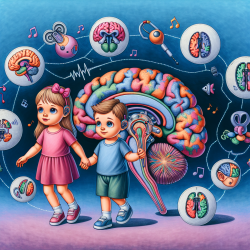Understanding Autism: A New Perspective
Autism Spectrum Disorder (ASD) is a complex neurodevelopmental condition characterized by challenges in social interaction, communication, and repetitive behaviors. Despite extensive research, the exact causes remain elusive. However, recent studies have shed light on the potential role of neurotrophic factors and oxidative stress in the development of autism.
The Role of Neurotrophic Factors
Neurotrophic factors are proteins that aid in the growth, survival, and differentiation of neurons. Altered levels of these factors can disrupt normal brain development, potentially leading to conditions like autism. The study "Sera from Children with Autism Induce Autistic Features Which Can Be Rescued with a CNTF Small Peptide Mimetic in Rats" explores this hypothesis.
Research Insights: Peptide 6 (P6) to the Rescue
The study found that sera from children with autism caused neurodegeneration and oxidative stress in neuronal cultures. However, pre-treatment with a small peptide mimetic of Ciliary Neurotrophic Factor (CNTF), known as Peptide 6 (P6), reversed these effects. P6 modulates the CNTF/JAK/STAT pathway, enhancing brain-derived neurotrophic factor (BDNF) expression, which is crucial for neuroprotection.
Implications for Practitioners
For practitioners, these findings open new avenues for therapeutic interventions. By focusing on restoring neurotrophic balance and reducing oxidative stress, there is potential to alleviate some of the neurodevelopmental challenges associated with autism. P6 could represent a novel therapeutic strategy, offering hope for improved outcomes.
Encouraging Further Research
While the study provides promising results, further research is essential. Practitioners are encouraged to explore the role of neurotrophic factors in autism and consider how therapies targeting these pathways might be integrated into treatment plans. Collaboration with researchers and participation in clinical trials could accelerate the development of effective interventions.
Conclusion
The study highlights the potential of targeting neurotrophic imbalances in autism therapy. By leveraging the protective effects of P6, there is hope for developing treatments that can mitigate the neurological impacts of autism, ultimately improving the quality of life for individuals with ASD.
To read the original research paper, please follow this link: Sera from Children with Autism Induce Autistic Features Which Can Be Rescued with a CNTF Small Peptide Mimetic in Rats.










